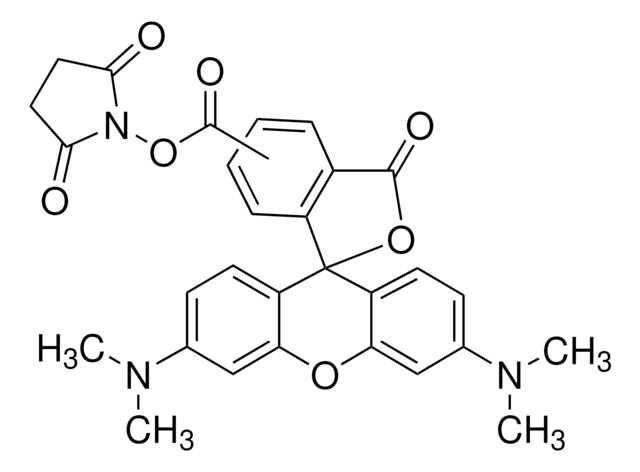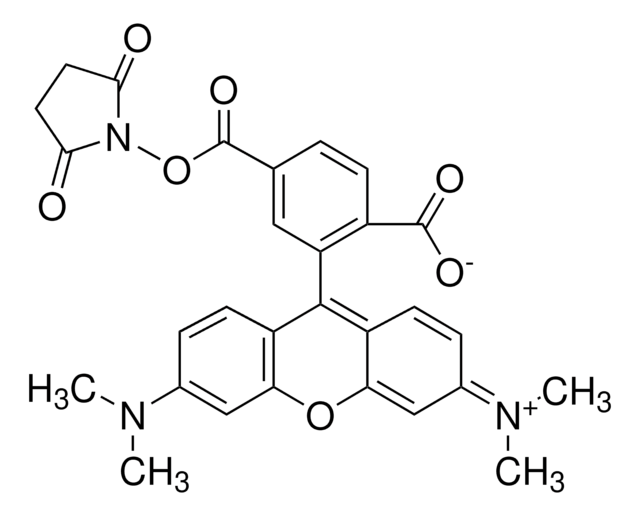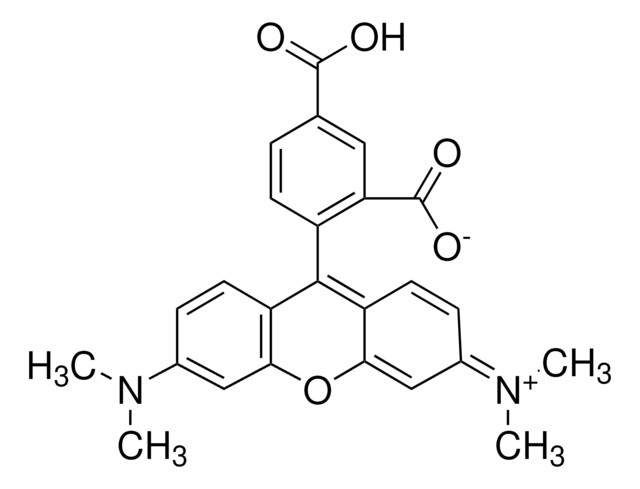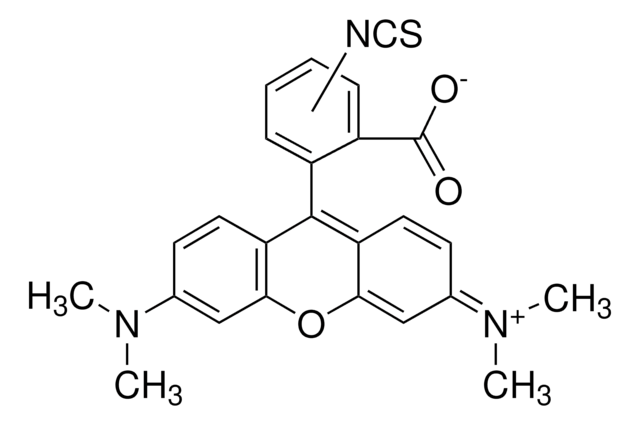53048
5-Carboxy-tetramethylrhodamine N-succinimidyl ester
BioReagent, suitable for fluorescence
Synonyme(s) :
"4-Carboxytetramethylrhodamine N-succinimidyl ester", 5-TAMRA
About This Item
Produits recommandés
Gamme de produits
BioReagent
Niveau de qualité
Solubilité
DMF: soluble
acetonitrile: soluble
Fluorescence
λex 543 nm; λem 578 nm in 0.1 M phosphate pH 7.0
Adéquation
suitable for fluorescence
Température de stockage
−20°C
Chaîne SMILES
CN(C)c1ccc2c(OC3=C\C(C=CC3=C2c4ccc(cc4C([O-])=O)C(=O)ON5C(=O)CCC5=O)=[N+](\C)C)c1
InChI
1S/C29H25N3O7/c1-30(2)17-6-9-20-23(14-17)38-24-15-18(31(3)4)7-10-21(24)27(20)19-8-5-16(13-22(19)28(35)36)29(37)39-32-25(33)11-12-26(32)34/h5-10,13-15H,11-12H2,1-4H3
Clé InChI
VWFRSNKRTNUMET-UHFFFAOYSA-N
Catégories apparentées
Application
Autres remarques
Produit(s) apparenté(s)
Code de la classe de stockage
11 - Combustible Solids
Classe de danger pour l'eau (WGK)
WGK 3
Point d'éclair (°F)
Not applicable
Point d'éclair (°C)
Not applicable
Équipement de protection individuelle
Eyeshields, Gloves, type N95 (US)
Certificats d'analyse (COA)
Recherchez un Certificats d'analyse (COA) en saisissant le numéro de lot du produit. Les numéros de lot figurent sur l'étiquette du produit après les mots "Lot" ou "Batch".
Déjà en possession de ce produit ?
Retrouvez la documentation relative aux produits que vous avez récemment achetés dans la Bibliothèque de documents.
Les clients ont également consulté
Articles
Fluorescent Labeling of Peptides
Chromogenic and fluorogenic derivatives are invaluable tools for biochemistry, having numerous applications in enzymology, protein chemistry, immunology and histochemistry.
Notre équipe de scientifiques dispose d'une expérience dans tous les secteurs de la recherche, notamment en sciences de la vie, science des matériaux, synthèse chimique, chromatographie, analyse et dans de nombreux autres domaines..
Contacter notre Service technique









